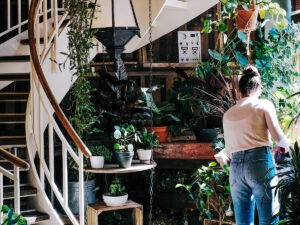Table of Contents
The Amazon Rainforest, home to an estimated 40,000 plant species, including 16,000 native tree varieties, with new ones also being routinely found, is a gigantic expanse of greenery and accounts for around 20 percent of the overall natural forest allocation in the country. Studies have shown that upwards of 90,000 tons of interesting plants can be found in a single square kilometer of the Amazon Rainforest. That being said, in the Amazon jungle, some of the most fascinating and rare varieties of plants can be found.
We have put together a list of these cool and interesting plants you can find in the Amazon Rainforest.
Cacao
We can’t imagine someone without chocolate being able to survive. The cacao plant is also a superfood that is filled with nutritional benefits, besides being one of the favorite sweets in the world. To benefit from renewable resources, mental alertness, and concentration, make raw cacao part of your daily diet. Cacao is also the main plant-based source of iron and contains more calcium than cow’s milk. For a balanced heart and brain, it is full of magnesium.
Heliconia Flower (Lobster-Claw)
This lovely flora of the Amazon is known as the Hanging Lobster Claw. This flower is light in color and its shape varies. Heliconia plants, noted for their characteristically long structure, depending on the type, range from 0.5 to almost 4.5 meters (1.5-15 feet) tall, and their leaves are 15-300 cm (6 in-10 ft) in height. They need to rise in warm and humid environments, hence becoming prevalent in the world’s tropical regions. For food and breeding, hummingbirds depend on Heliconia trees, and they are also the plant’s primary pollinators.
Interesting plants that live in the rainforest: Giant Water Lilies
You may have seen these amazing Victoria water lilies on one of your jungle excursions if you have ever been on an Amazon River cruise or stayed in a jungle lodge. These water lilies are not the typical flower – they have a diameter of up to 3 meters – imagine, you should lay down on one! They were named after the United Kingdom’s Queen Victoria.
Lupuna Tree
The strong Lupuna tree (Ceiba Pentandra) plays an important role in the forest shelter and feeding the Amazonica environment. Prove several types of Amazonian wildlife insects, amphibians, birds (toucans, for example), monkeys. As well as smaller Amazonian flora that relies on sunshine for survival. A replica of the developing layer that grows above the rainforest canopy, rising to four meters (13 feet) each year.
The shades of its umbrella-shaped crown and trunk vary from pink-white to orange.
Must-see interesting plants: Monkey Brush Vine
A striking vine native to South America is the Monkey Brush. In the whole jungle, this tropical plant spreads like a fungus on other plants and trees. The flower serves as a natural source of hummingbird feeding and a resting place for green iguanas. The flower is very vivid, a bright orange hue that can easily be seen in the greenery of the rainforest. The Monkey Brush name has come from the long and vivid stamens of the flower.
Passion Fruit Flower
I’m sure all of you loved a glass of passion fruit juice, but did you know this plant grows one of the most stunning flowers in the world, too? A robust vine that can hang on to almost anything and grow 15 to 20 ft. a year is the passion fruit tree. In tropical climates, this scheme does well and supports the light, but the passion fruit flower does not like intense weather. If there is so much sun, it will start rising into the shade of the passion fruit tree.
Bromeliads
These lovely plants are vivid in color, ranging from blues and purples to reds and oranges. On the ground or other planets, and also on rocks, these flowers emerge. Like the passion fruit flower, a young, juicy fruit is also produced by some of the bromeliad species.
Orchids
The orchid tree is one of nature’s most beautiful flowers. In the whole world, they are perhaps the largest family of flowers (about 30,000 different species). Orchids grow in all shapes and sizes, and they grow in nearly all temperatures around the world, except cold, because of their adaptable existence! For pollination, orchids, like many flowers, depend on insects and birds. Rainforest protection is important for their survival.
Brazil Nut Tree is one of the interesting plants in the rainforest.
Brazil nuts (Bertholletia excelsa), one of the most famous trees in the Amazon Rainforest, rise to a fantastic height and have a distinctive form. They have a straight trunk and a crown of leaves and roots, similar to a bush. With a trunk 2 meters (6 ft) thick, these trees grow to 50 meters (160 ft) tall. The Brazil nuts, one of the biggest trees in the Amazon, are great trees to find in the rainforest. Their nuts were first found in the early 1800s by the explorer and naturalist Alexander von Humboldt on his journey down the Amazon River. The fruit pods that hold the nuts are incredibly heavy, and only macaws and a form of big rodent called an agouti can break them.












